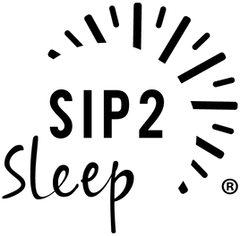8 Famous People Whose Dreams Led to Amazing Ideas

Did you know that some of the world's most groundbreaking ideas came to people while they were asleep? According to a study published in Nature, people are three times more likely to solve a problem after a good night's sleep compared to staying awake. That's pretty impressive, right?
Throughout history, sleep has been a powerful source of inspiration, leading to scientific discoveries, technological advancements, artistic masterpieces, and captivating stories. Quality sleep doesn't just rest our bodies—it fuels our creativity and helps us tap into our full potential.
In this article, we'll explore how sleep boosts creativity by looking at 8 famous individuals whose dreams led to amazing ideas.
Nikola Tesla
Nikola Tesla, the genius behind AC electricity.
Nikola Tesla, the brilliant mind behind alternating current (AC) electricity, truly believed in harnessing the power of his imagination. He often said that his most amazing ideas came to him through vivid mental images. In his autobiography, "My Inventions," Tesla described his unique creative process:
"My method is different. I do not rush into actual work. When I get an idea, I start at once building it up in my imagination... I change the construction, make improvements, and operate the device in my mind."
One of his most famous breakthroughs happened during a walk in Budapest. He had been struggling with a tricky problem related to his invention of the induction motor when the solution appeared to him in a moment of inspiration. Tesla visualized the concept of a rotating magnetic field—a breakthrough that changed electrical engineering forever and made modern power systems possible.
Tesla’s experience shows how harnessing the power of the subconscious mind can lead to innovative solutions that have a lasting impact.
Elias Howe
Elias Howe was, inventor of the modern sewing machine.
Elias Howe, the inventor of the modern sewing machine, also had a dream that led to a major invention. He was struggling to figure out how to design a machine that could sew effectively. One night, he dreamed he was captured by warriors wielding spears. In his dream, he noticed that the spears had holes near their tips.
This vivid image sparked an idea—the needle could have the eye near the point, not at the top like traditional needles.
This simple but brilliant idea, inspired by a dream, led to the first functional sewing machine and revolutionized the textile industry. Howe's story highlights how famous ideas can come from dreams and demonstrates how sleep boosts innovation.
Dmitri Mendeleev
Dmitri Mendeleev, creator of the periodic table.
Dmitri Mendeleev, the Russian chemist who created the periodic table of elements, reportedly had the idea come to him in a dream. After days of trying to organize the elements, he fell asleep at his desk. In his dream, he saw the elements arranged in a logical order based on their atomic weights and properties.
“I saw in a dream a table where all the elements fell into place as required. Awakening, I immediately wrote it down on a piece of paper,” Mendeleev said.
His dream led to one of the most significant tools in chemistry, showing the benefits of quality sleep for innovation.
Mary Shelley
Mary Shelley, author of "Frankenstein."
Mary Shelley, the author of the classic novel "Frankenstein," is another great example of how dreams can inspire creativity. At just 18 years old, she joined a group of writers in a challenge to write a ghost story. Struggling for ideas, she had a vivid nightmare about a scientist who created life but was horrified by his creation.
“I saw the pale student of unhallowed arts kneeling beside the thing he had put together,” Shelley wrote.
This dream sparked the idea for her novel, which explored the ethical questions and dangers of unchecked scientific advancement. Shelley's experience shows that famous inventions inspired by sleep can emerge from our subconscious, emphasizing how sleep enhances creativity.
Stephen King
Stephen King is, master of horror and suspense.
Renowned horror and suspense author Stephen King has often spoken about how his dreams and nightmares have inspired many of his novels. In fact, his book "Misery" was based on a vivid nightmare he had during a flight. King believes that dreams are a way for the subconscious mind to process ideas, leading to creative breakthroughs.
“I've always used dreams the way you'd use mirrors to look at something you couldn't see head-on,” King said.
His openness to his dreams shows the importance of REM sleep in creativity and how sleep improves creative thinking.
Paul McCartney
Paul McCartney is, legendary musician and songwriter.
Music legend Paul McCartney shared a fascinating story about how one of the most famous songs of all time, The Beatles' "Yesterday," came to him in a dream. He woke up one morning with the melody playing in his head and immediately rushed to a piano to play it before it faded from his memory.
“I liked the melody a lot but because I’d dreamed it I couldn’t believe I’d written it,” McCartney said.
The creation of "Yesterday" reminds us that sometimes our greatest creative breakthroughs come when we least expect them—in the quiet stillness of sleep, highlighting how sleep and creativity are intertwined.
James Cameron
James Cameron, director of "Avatar."
You've probably seen James Cameron's movie "Avatar," one of the highest-grossing films in history. But did you know that it all started with a dream? When Cameron was a young man, he had a vivid dream about a bioluminescent forest filled with glowing trees and strange, beautiful creatures.
“That’s a dream I had when I was 19,” Cameron revealed.
That dream stuck with him for years, eventually inspiring the stunning world of Pandora in "Avatar." Cameron's story shows how unlocking creative potential through sleep can lead to groundbreaking artistic achievements.
Christopher Nolan
Christopher Nolan, visionary filmmaker.
Acclaimed filmmaker Christopher Nolan, known for movies like "Inception," "Interstellar," and "The Dark Knight" trilogy, has said that many of his best ideas come from dreams. The concept for "Inception," a film that explores the world of dreams within dreams, came to Nolan when he was just 16 years old.
“I wanted to do this for a very long time, it's something I've thought about off and on since I was about 16”, Nolan said.
He even keeps a notebook by his bed to jot down ideas and imagery from his dreams. Nolan's work shows techniques to enhance creativity with sleep, such as keeping a dream journal, and how to remember dreams for creative inspiration.
The Creative Spark of Sleep
These incredible individuals show us that sleep isn't just about resting our bodies. It’s about giving our minds the space to explore, discover, and create. When we sleep, we open ourselves up to a world of possibilities, allowing our subconscious to connect ideas, find innovative solutions, and spark our imaginations. This highlights the importance of REM sleep in creativity.
How Sleep Enhances Creativity
Sleep plays a crucial role in our creative process. During quality sleep, especially in the REM stage, our brains are busy processing information, consolidating memories, and connecting different ideas. This can lead to creative insights and problem-solving abilities that are often hard to achieve when we're awake.
The Hypnagogic State: A Gateway to Innovation
Research suggests that the earliest stage of sleep, known as N1 or hypnagogia, is particularly fertile ground for creative insights. This dreamy, half-awake state is where we often experience fleeting, imaginative thoughts before drifting into deeper sleep. It's a connection point between our subconscious mind and innovation.
Famous inventor Thomas Edison would nap with metal balls in his hands. As he drifted off, the balls would fall and wake him, allowing him to capture those creative sparks from the edge of consciousness. This is one of several dream incubation methods used to harness the creative power of sleep.
Scientific Studies on Sleep and Creativity
Recent studies have explored how we might intentionally tap into this hypnagogic state to enhance creativity.
Researchers at MIT and Harvard Medical School developed a device called Dormio, a wearable glove that tracks signs of sleep and can gently guide dream content.
In a 2020 study, they showed that Dormio could effectively guide dreams toward a specific theme. Building on these findings, a new study published in Scientific Reports in May 2023 looked at the connection between targeted dreaming and creativity.
Participants were prompted to dream about trees while wearing the Dormio device. The results showed that those who received these dream prompts were significantly more creative in problem-solving tasks compared to participants who napped without prompting or those who stayed awake.
“One of the goals of our group is to give people more insights into how their brain works, and also what their cognitive state is and how they may be able to influence it,” says Pattie Maes, a professor in MIT’s Media Lab and one of the lead researchers on the study.
This research not only provides insights into the creative power of the hypnagogic state but also suggests that we might be able to influence our dreams to actively enhance our creative abilities.
Tips to Get Better Sleep
If you're inspired by these stories and wondering how to tap into your own creative potential during sleep, here are some methods:
- Keep a Dream Journal: Place a notebook by your bed to jot down dreams immediately upon waking. This helps you remember and reflect on dream content for creative inspiration.
- Practice Dream Incubation: Before sleep, focus your thoughts on a particular problem or topic you'd like to explore. This can encourage your subconscious to work on it during sleep.
- Improve Sleep Hygiene: Establish a regular sleep schedule, create a restful environment, and limit exposure to screens before bedtime to enhance the quality of your sleep.
- Use Relaxation Techniques: Meditation or deep-breathing exercises before bed can help you enter a more receptive state for creative dreams.
A Natural Sleep Aid for a Creative Mind
If you're looking for natural sleep aids to enhance your creative thinking, Sip2Sleep® offers a solution backed by science and nature. It's a unique blend of Montmorency Tart Cherry Extract and plant-based Rafuma leaf extract, both known for their sleep-promoting properties.
- Montmorency Tart Cherry Extract: Rich in natural melatonin and antioxidants, it supports sleep and overall health, serving as a melatonin alternative for better sleep.
- Rafuma Leaf Extract: Traditionally used to reduce stress and promote relaxation.
Quality sleep benefits not just our health but also our creativity and problem-solving abilities.
Try Sip2Sleep® Tonight
Ready to tap into your full creative potential? A good night's sleep can help you think clearly and come up with great ideas. Try Sip2Sleep® tonight and see what you can achieve.







